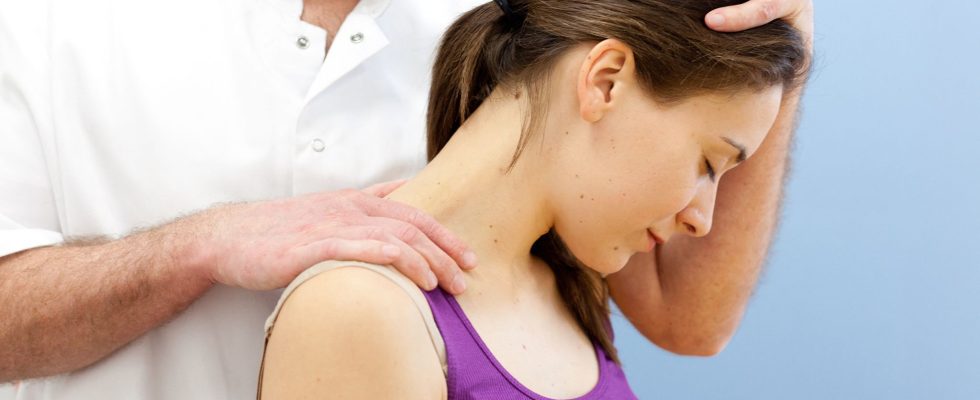Students who are not aware of the gestures to avoid, schools that are too little controlled… In a vitriolic report published on Wednesday, the General Inspectorate of Social Affairs (Igas) points to numerous shortcomings in the training of osteopaths, which count yet among the favorite alternative therapists of the French. In question, lessons that “do not guarantee the quality of diplomas and, ultimately, the safety of users”, denounces Igas. To become an osteopath, it is no longer necessary since 2002 to have a health professional status: it suffices to follow a course of five years in a private school approved by the State. A decision that Igas inspectors regret.
To accommodate students, schools must obtain accreditation, issued by the National Advisory Commission for Accreditation (CCNA). However, it is struggling to “validate certain essential criteria relating to pedagogy and the level of professional skills acquired during clinical practice”, because no control is carried out on site, underlines the report. Igas therefore recommends tightening the procedure to become a training organization. At the present time, it consists of a simple declaration by the establishments, which indicates the qualifications of the teachers, their time of presence, and the number of consultations that the students can carry out. The Igas wishes in particular that an “on-site control” be carried out by the regional health agencies.
Gestures to avoid, not known to all
As it stands, a certain number of establishments do not therefore appear to meet the requirement criteria, note the inspectors. They warn of “possible excesses within certain schools […] to doctrinal lessons, excluding collaboration with other professionals”. Gaps that raise questions about the number of accidents caused by poor handling. Impossible to know because there is no follow-up. Igas recommends setting up a register of serious accidents resulting from acts of osteopathy and chiropractic, and also to create a national commission, responsible for describing and evaluating the practices of osteopaths and chiropractors, to clear up the vagueness.
To avoid accidents, certain manipulations, in particular those of the skull, face and spine, can only be carried out after establishment by a doctor of a diagnosis attesting to the absence of contraindications. Others are simply excluded in all circumstances, such as gyneco-obstetric manipulations. However, some students or professionals in practice would not be aware of the gestures to avoid. “It appears from the hearings and visits carried out by the mission that these standards are not always respected, or even are not known to certain students and professionals in practice”, worry the inspectors of Igas.
The report also stresses the need to change the criteria for obtaining a diploma in osteopathy, in order to “guarantee the quality of the diplomas issued”. Among the avenues proposed, the validation of a final examination whose jury would include members from outside the school, or the creation of a public organization for training in osteopathy, as is the case in Germany for example. .
In parallel, the General Inspectorate of Social Affairs proposes to reduce the number of trained professionals, today in “uncontrolled increase”. France is in fact the country with the most osteopaths per inhabitant, 42 per 100,000, compared to 34 in the United States and 8 in Germany.
An ineffective practice
The Igas recalls that the effectiveness of osteopathy has not been demonstrated and that “several academics warn of the potential dangers of these uncontrolled activities”. “It is therefore essential that the exercise of these professionals be the subject of scientific research aimed at better understanding and evaluating the practice”, concludes the Inspection.
If the studies are lacking, several of them tend to show that osteopathy would not be, or only slightly, effective. Cochin Hospital, Inserm and the University of Paris concluded in 2021 that “osteopathic manipulations have a weak and not clinically relevant effect on the impact of low back pain on activities of daily living”. In this randomized clinical trial, conducted on 400 patients and published in the Journal of the American Medical Association (JAMA), no benefit was identified on “pain, quality of life or drug consumption”.
Still, osteopathy is sometimes preferred to conventional care, when it is not chosen by default, due to the lack of caregivers. “Some of our interlocutors have described situations in which patients, living in medical deserts, would regularly have recourse to an osteopath instead of a doctor or a physiotherapist”, relates the IGAS report. A phenomenon that should increase: “The growing shortages of health professionals raise fears that these deviant practices will spread”.
Avoid opening the door to sectarian aberrations
What worries specialists, because unconventional practices such as osteopathy, but also chiropractic, hypnosis, or even acupuncture can sometimes be at the origin of control, which regularly worries the Mission inter-ministerial vigilance and fight against sectarian aberrations (Miviludes). Reports sent to it have increased by 50% since 2015.
In March 2023, the government announced the creation of a “support committee for the supervision of unconventional care practices”, of which osteopathy is a part, “so that, for example, they cease to coexist […] indiscriminately the sectarian excesses and the practices used by health professionals in support of the exercise”, explained the Minister Delegate for Health Professions, Agnès Firmin Le Bodo.
